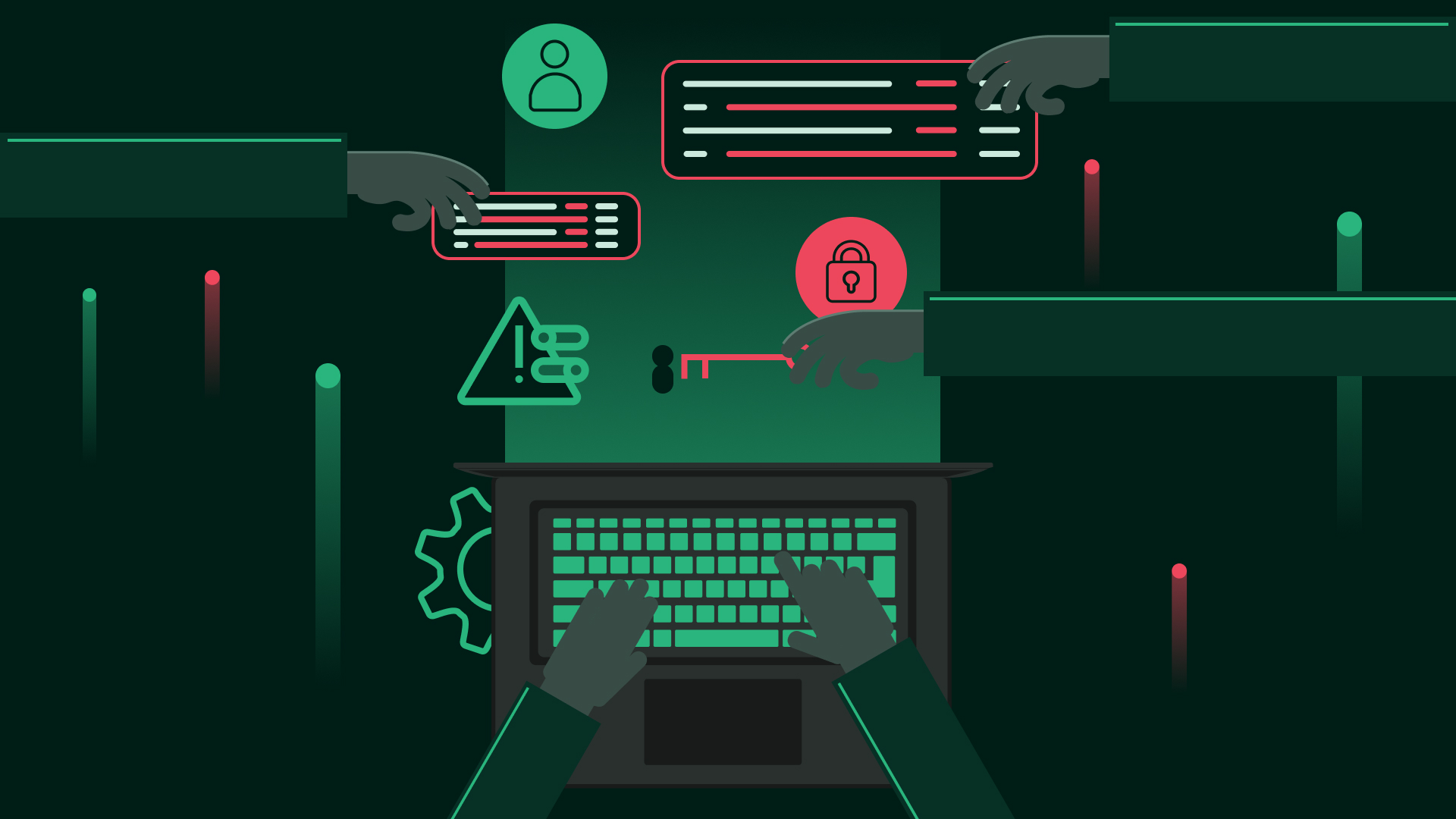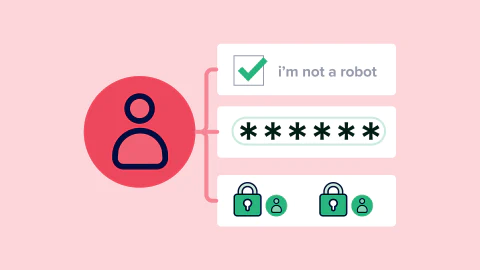In an increasingly interconnected and data-driven world, where information shapes decisions and fuels innovation, the integrity of data has become paramount. However, lurking beneath the surface is a silent threat that can undermine trust, compromise systems, and wreak havoc on organizations: data tampering.
In this post, we delve into the realm of data tampering, exploring the vulnerabilities, the reasons behind data tampering practices, and countermeasures against them.
Does your team struggle with software audits? Is it a mess of screenshots and spreadsheets?
Learn how to automate itWhat Is Data Tampering?
Data tampering is the deliberate or accidental alteration, deletion, or insertion of data without authorization or proper validation. This can happen in software systems, databases, network communications, or any digital storage device.
One of the reasons why data tampering is so dangerous is that just a very small amount of tampered data can have a huge impact on decisional accuracy. Preventing data tampering is thus extremely crucial in ensuring the security and integrity of digital information.
The likelihood of data tampering is more common than we think. Systems storing financial information or personal data are highly prone to data tampering. Systems that allow weak or outdated security measures, such as weak passwords, unencrypted data, and unauthorized access, such as open network ports or shared credentials, are equally vulnerable to data tampering.
Why and How Data Tampering Happens
Attackers may attempt to carry out data tampering for a variety of reasons, including financial gain, espionage, or sabotage. Data tampering attacks may also be part of a larger cyber attack, such as a ransomware attack or a distributed denial of service (DDoS) attack.
Data tampering can also occur due to mistakes or negligence on the part of employees. For example, an employee might accidentally delete or modify critical data.
Another factor that can contribute to data tampering in a software company is insufficient security controls or inadequate security policies. Additionally, data tampering can occur as a result of deliberate insider attacks. Employees who have access to sensitive data may be motivated to steal or manipulate it for personal gain.
Types of Data Tampering
Data tampering can take many forms. Here are some types:
- Manipulation of data: This type of attack involves altering data to change its meaning or accuracy. For instance, an individual might alter the values in a financial report, which could lead to false information being presented to stakeholders.
- Deletion of data: This type of attack involves the removal of data from a system or database. For example, an individual might accidentally delete critical data, such as customer information or transaction records.
- Insertion of data: This type of attack involves the addition of new data into a system or database. For instance, an attacker might add a new user account with elevated privileges to gain unauthorized access to sensitive information.
- Duplication of data: This type of attack involves making copies of data for malicious purposes. For instance, a hacker might copy a database of customer information and sell it on the black market.
- Substitution of data: This type of attack involves replacing data with false or misleading information. For example, a hacker might modify a payment gateway to steal credit card information from unsuspecting customers.
- Replay attacks: This type of attack involves reusing data that has already been transmitted to gain unauthorized access to a system. For example, an attacker might intercept login credentials and then use them to gain access to an online account.
- Spoofing: This type of attack involves impersonating a legitimate source or user to gain unauthorized access to a system or data. For instance, a software engineer might accidentally install a malicious program that mimics a legitimate application, allowing an attacker to gain access to sensitive information.
How to Prevent Data Tampering
There are several steps that you can take to prevent data tampering.
Using Access Controls
Companies should implement a role-based access control (RBAC) system that assigns different access levels to different users based on their job responsibilities. For example, employees in the HR department should have access to personnel records, while employees in the accounting department should have access to financial data.
To implement access controls, companies must first identify their critical data and classify it based on its sensitivity. They must then implement appropriate access controls, such as firewalls, intrusion detection and prevention systems (IDPS), and data loss prevention (DLP) software, to ensure that only authorized users can access the data.
Strong passwords and multi-factor authentication are other essential tools for preventing data tampering. For example, users may need to provide a password and a fingerprint or a password and a one-time code sent to their phone, as part of multi-factor authentication.
Implement Encryption
Encryption can help protect data from being intercepted or modified in transit and can protect data from unauthorized access. In the context of data tampering, encryption can be especially valuable because it ensures the integrity of the data. If someone attempts to modify the encrypted data, the decryption process will fail and the tampering will be detected. This makes it more difficult for attackers to manipulate the data without being detected.
To implement encryption in a company, businesses should implement encryption at various stages, such as during transmission, storage, and backup. Companies can use encryption algorithms like Advanced Encryption Standard (AES), Secure Sockets Layer (SSL), and Transport Layer Security (TLS) to protect data in transit. They can also use full disk encryption or file encryption to protect data at rest on servers, workstations, and mobile devices.
It’s also crucial to implement encryption in the software produced by the company. For example, developers can use libraries like OpenSSL, Bouncy Castle, or Java Cryptography Extension (JCE) to implement encryption in their software. It’s essential to ensure that the encryption libraries or frameworks used are up to date and comply with the latest industry standards. It should also be ensured that sensitive information is not added to code directly and is exposed through secure configurations, like SSM variables provided by AWS.
Use Digital Signatures
Digital signatures can be used to verify the authenticity and integrity of data and can help detect any unauthorized modifications. To implement digital signatures, companies must have a public key infrastructure (PKI). This allows them to securely distribute public keys and validate digital signatures.
The PKI involves a certificate authority that issues digital certificates to users, which contain their public keys and other identifying information. The recipient can use the certificate authority’s public key to validate the digital signature. This method also comes in handy when trying to access servers owned by the company.
Using Append-Only Databases
Append-only databases only allow new data to be added, and never allow existing data to be modified or deleted. This can help ensure that data remains unchanged and prevents unauthorized modifications.
Another possible solution is something called copy-on-write (COW). Each time a database is modified, delta snapshots are taken. This would permit a security team to detect tampering by checking for unexpected file system (or database) snapshots. Many database applications have built-in snapshot features, so implementing such a technology wouldn’t be a major effort.
Using Secure Enclaves
Secure enclaves are specialized hardware features or technologies that provide a protected space where sensitive code can reside securely. They leverage hardware, such as Intel SGX (Software Guard Extensions) or AMD SEV (Secure Encrypted Virtualization), to establish isolated execution environments. These enclaves are isolated from the rest of the system, including the operating system and other applications, ensuring that sensitive data and computations are shielded from potential tampering or unauthorized access.
Examples of systems that use Secure Enclaves include Digital Rights Management (DRM) systems and Blockchain Networks. DRM systems protect copyrighted content against unauthorized access or copying by incorporating secure enclaves. Enclaves are used to securely store decryption keys, perform decryption operations, and enforce content access policies.
Blockchain platforms, like Hyperledger Fabric and R3 Corda, leverage secure enclaves to enhance the privacy and security of transactions. By utilizing enclaves, blockchain networks can securely execute smart contracts and protect the confidentiality of sensitive data within the decentralized network.
Use Blockchain Technology
Blockchain technology is a type of distributed ledger that’s designed to be tamper-proof. Each block in the chain is linked to the previous one, and any changes made to a block are immediately visible to all participants in the network, making it difficult to tamper with data.
To implement blockchain technology, companies would need to first choose the right platform. There are various blockchain platforms available, including Bitcoin, Ethereum, and Hyperledger. Each platform has its own features and benefits, and companies should select the platform that best suits their needs.
After selecting a platform, a company would then need to develop a smart contract. Smart contracts are self-executing programs that can automate the verification and execution of transactions on the blockchain.
Companies can develop a smart contract that enforces data integrity rules and ensures that any changes to the data are authorized and verified by all participants in the network. They should then integrate blockchain technology with their existing systems and applications to ensure that data is automatically recorded on the blockchain. As a final step, they can establish a network of trusted participants, such as customers, vendors, and partners, to participate in the blockchain network.
Blockchain technology offers several benefits for preventing data tampering, including decentralization, immutability, transparency, and security. However, implementing blockchain technology requires a significant investment in infrastructure and training. Businesses must also ensure that they have the resources and expertise to manage the network effectively.
Employ Tamper-Evident and Tamper-Proof Technologies
Tamper-evident and tamper-proof technologies can help prevent unauthorized modifications to data. Tamper-evident technologies provide visible evidence of tampering, such as seals or tapes that show if something has broken them. These technologies provide visible evidence that data has been tampered with, but may not prevent the tampering from happening. In a software domain, these technologies can be implemented through hashing, digital signatures, version control, etc.
On the other hand, tamper-proof technologies are designed to prevent tampering. This is usually achieved through a combination of encryption, access controls, blockchain, etc. For example, Adobe’s electronic signature solution utilizes advanced cryptographic algorithms to secure and verify digital signatures. By applying tamper-evident techniques, Adobe Sign ensures that electronically signed documents cannot be altered without detection.
In theory, no system can be entirely tamper-proof. Given enough time, resources, and expertise, a malicious actor can potentially tamper with or compromise any system. However, the goal of implementing tamper-proof technologies is to make it extremely difficult, time-consuming, and economically unfeasible for anyone to tamper with the system without detection.
Conclusion
Data tampering is a serious threat to the security and integrity of digital information. Tampering with data can have serious consequences. These range from data breaches and financial fraud to the compromise of sensitive information and even national security.
To combat data tampering, companies and organizations must take proactive steps to protect their data. Implementing a combination of tamper-evident and tamper-proof technologies strengthens the security posture of systems and data. By implementing such technologies, companies can prevent unauthorized modifications to their data and protect their sensitive information from being compromised.
Check out our security and defense solution to learn more about securing your applications and infrastructure.
This post was written by Deboshree Banerjee. Deboshree is a backend software engineer with a love for all things reading and writing. She finds distributed systems extremely fascinating and thus her love for technology never ceases.
















